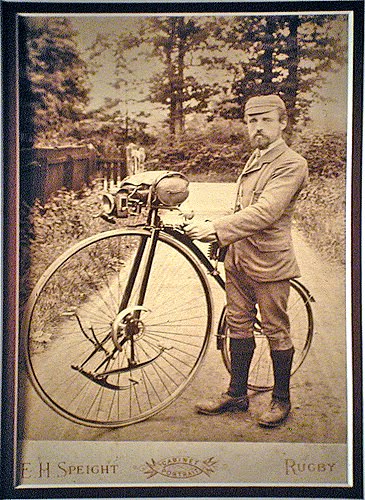Also, I went to pick up the tubing for the backbone from my local supplier. A piece of 1 3/8" 0.049" chromoly that I ordered two months ago. It seems that my supplier isn't. I'll have to look further afield for this as well. Trying to use local companies can be too trying.
So, in the meantime I'm going to start work on the wheels as a complete break from the recent disappointments. The front hub has a most complicated arrangement of bearings, featuring a double row of balls per side and then a live axle running concentrically through the hub on a pair of bearings. The hub has 6 bearing surfaces that all have to be concentric, I'll need to plan how to machine this carefully.
However before I can start on the axle, I need to make the bearing races that screw into the bearing housings, the knees, previously made.
Starting with a lump of 4140 steel that happens to be ground at 1.75" already
 |
| Checking the fit. |
 |
| Bore a big hole using my fabulous new boring bar. |
Rough out the bearing surface as a plain bore with a 45 degree bevel at the inner end.
The idea is to minimise the amount of material to be removed by the form tool as much as possible. This photo is from the second bearing off the bar as I forgot to take a picture of the first one I made.
 |
| Then use a form tool to profile the bevel to a radius of the correct size. |
With the form cut I can then polish the bearing surface.
I'll need to do this again after I've had them hardened.
Then part off each bearing with enough meat left to clean up the inner, parted off, edge.
The inner races have an extra flange extending inwards,
this forms part of a labyrinth seal with the hub flanges, more later.
I still need to machine the castellations on the outer races that allow the adjustment to be locked. I'll need to figure out a set up for that on the ever versatile Myford.
In other news, I've set up a small work bench with a vice in another part of the shed for the kids to play with. I'll get them a selection of tools for Christmas and let them cut off digits at their leisure. They don't read this blog, so I won't be spoiling any surprises.
Note that the vice is on the left, both my kids are sinister despite my wife and I being dexter.
Weird eh?












